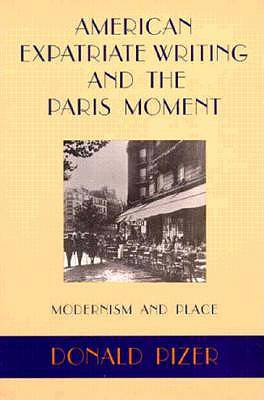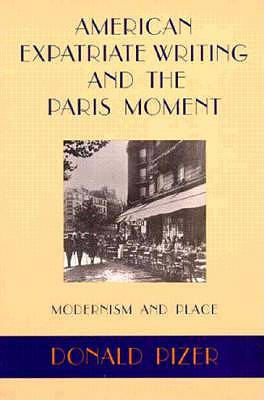
- Retrait gratuit dans votre magasin Club
- 7.000.000 titres dans notre catalogue
- Payer en toute sécurité
- Toujours un magasin près de chez vous
- Retrait gratuit dans votre magasin Club
- 7.000.000 titres dans notre catalogue
- Payer en toute sécurité
- Toujours un magasin près de chez vous
30,95 €
+ 61 points
Description
Montparnasse and its café life, the shabby working-class area of the place de la Contrescarpe and the Pantheon, the small restaurants and cafés along the Seine, and the Right Bank world of the well-to-do . . . for American writers self-exiled to Paris during the 1920s and 1930s, the French capital represented what their homeland could not: a milieu that, through the freedom of thought and action it permitted and the richness of life it offered, nurtured the full expression of the creative imagination. How these expatriates interpreted and gave modernist shape to the myth of "the Paris moment" in their writing is the altogether fresh focus of Donald Pizer's study of seven of their major works.
Pizer elucidates a striking difference between the genres of expatriate autobiography and fiction, and arranges his discussion accordingly. He first examines Ernest Hemingway's A Moveable Feast, Gertrude Stein's The Autobiography of Alice B. Toklas, and The Diary of Anaïs Nin, 1931-1934, all of which depict the emergence and triumph of the creative imagination within the Paris context. He then turns to Hemingway's The Sun Also Rises, John Dos Passos' Nineteen-Nineteen, and F. Scott Fitzgerald's Tender Is the Night, which dramatize the tragic potential in seeking a richness and intensity of creative expression within the city's setting. Henry Miller's Tropic of Cancer, a relatively late example of American expatriate writing, constitutes a synthesis of the two tendencies, Pizer shows. Through careful readings of the texts, Pizer identifies both the common threads in the expatriates' response to the Paris moment and the distinctive expression each work gives to their shared experience. Most important, he addresses the neglected question of how the portrayal of the Paris scene helps shape a specific work's themes and form. He traces such experimental devices as fragmented or cubistic narrative forms, the dramatic representation of consciousness, and sexual explicitness, and explores the powerful and evocative tropes of mobility and feeding. As Pizer demonstrates, Paris between the two world wars was for the American expatriates more than a geographical entity. It was a state of mind, an experience, that engendered the formal expression of a personal aesthetic. The engaging and significant interplay between artist, place, and innovative self-reflexive forms composes, Pizer maintains, the most distinctive contribution of expatriate writing to the literary movement called high modernism.Spécifications
Parties prenantes
- Auteur(s) :
- Editeur:
Contenu
- Nombre de pages :
- 149
- Langue:
- Anglais
- Collection :
Caractéristiques
- EAN:
- 9780807122204
- Date de parution :
- 01-09-97
- Format:
- Livre broché
- Format numérique:
- Trade paperback (VS)
- Dimensions :
- 153 mm x 230 mm
- Poids :
- 235 g







